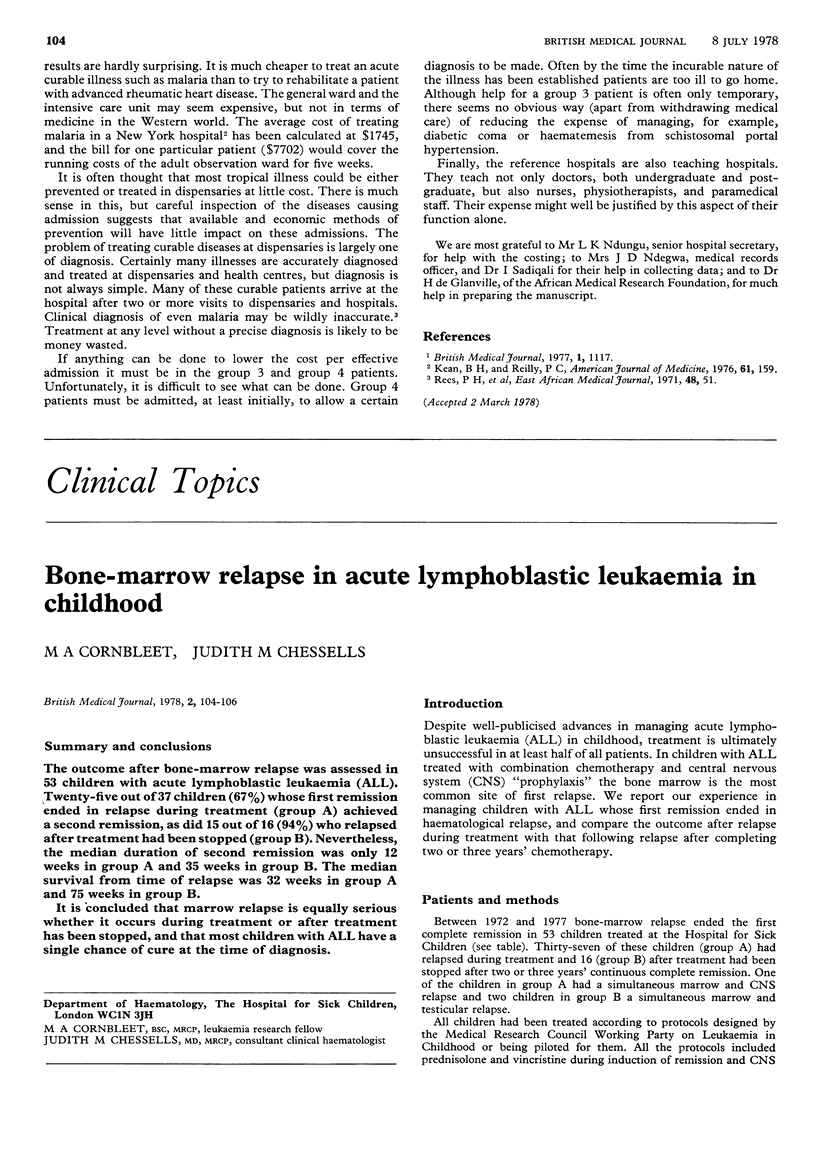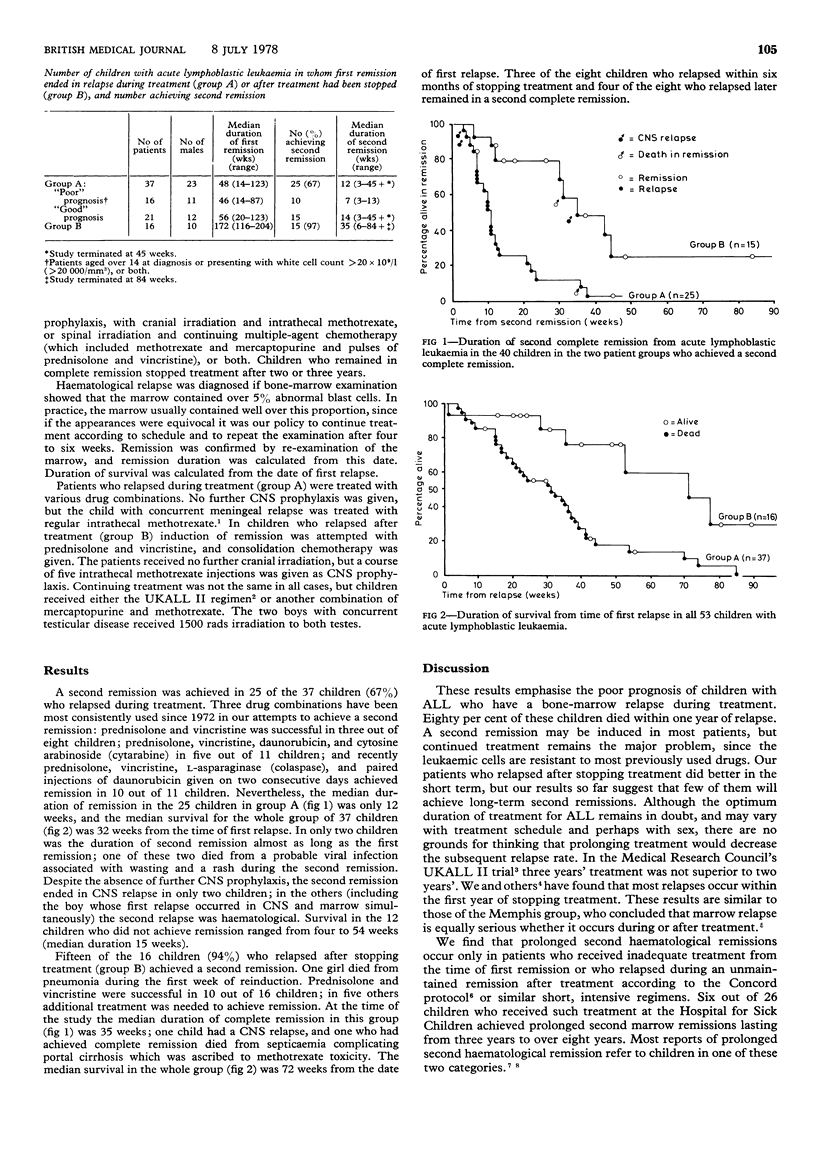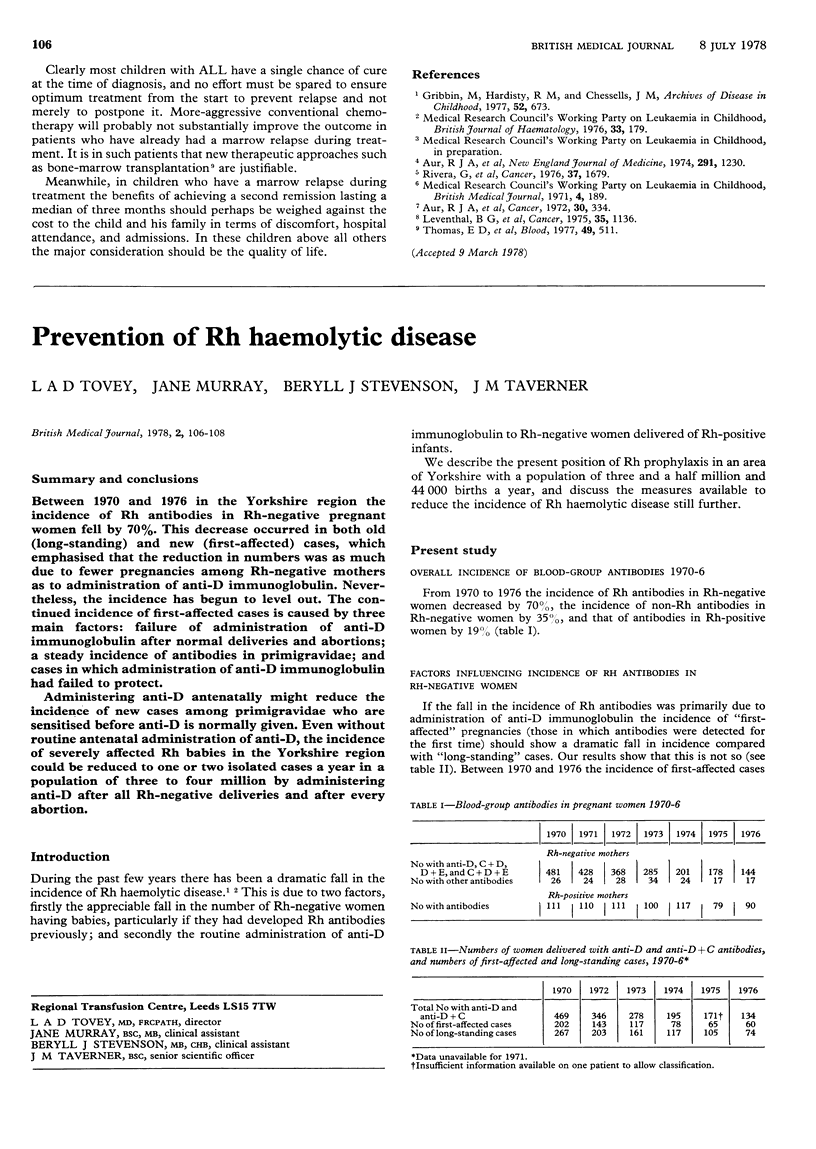Abstract
The outcome after bone-marrow relapse was assessed in 53 children with acute lymphoblastic leukaemia (ALL). Twenty-five out of 37 children (67%) whose first remission ended in relapse during treatment (group A) achieved a second remission, as did 15 out of 16 (94%) who relapsed after treatment had been stopped (group B). Nevertheless, the median duration of second remission was only 12 weeks in group A and 35 weeks in group B. The median survival from time of relapse was 32 weeks in group A and 75 weeks in group B. It is concluded that marrow relapse is equally serious whether it occurs during treatment or after treatment has been stopped, and that most children with ALL have a single chance of cure at the time of diagnosis.
Full text
PDF


Selected References
These references are in PubMed. This may not be the complete list of references from this article.
- Aur R. J., Simone J. V., Husto H. O., Verzosa M. S., Pinkel D. Cessation of therapy during complete remission of childhood acute lymphocytic leukemia. N Engl J Med. 1974 Dec 5;291(23):1230–1234. doi: 10.1056/NEJM197412052912306. [DOI] [PubMed] [Google Scholar]
- Aur R. J., Verzosa M. S., Hustu H. O., Simone J. V. Response to combination therapy after relapse in childhood acute lymphocytic leukemia. Cancer. 1972 Aug;30(2):334–338. doi: 10.1002/1097-0142(197208)30:2<334::aid-cncr2820300205>3.0.co;2-6. [DOI] [PubMed] [Google Scholar]
- Gribbin M. A., Hardisty R. M., Chessells J. M. Long-term control of central nervous system leukaemia. Arch Dis Child. 1977 Sep;52(9):673–678. doi: 10.1136/adc.52.9.673. [DOI] [PMC free article] [PubMed] [Google Scholar]
- Leventhal B. G., Levine A. S., Graw R. G., Jr, Simon R., Freireich E. J., Henderson E. S. Long-term second remissions in acute lymphatic leukemia. Cancer. 1975 Apr;35(4):1136–1140. doi: 10.1002/1097-0142(197504)35:4<1136::aid-cncr2820350417>3.0.co;2-t. [DOI] [PubMed] [Google Scholar]
- Rivera G., Pratt C. B., Aur R. J., Verzosa M., Hustu H. O. Recurrent childhood lymphocytic leukemia following cessation of therapy: treatment and response. Cancer. 1976 Apr;37(4):1679–1686. doi: 10.1002/1097-0142(197604)37:4<1679::aid-cncr2820370411>3.0.co;2-8. [DOI] [PubMed] [Google Scholar]
- Thomas E. D., Buckner C. D., Banaji M., Clift R. A., Fefer A., Flournoy N., Goodell B. W., Hickman R. O., Lerner K. G., Neiman P. E. One hundred patients with acute leukemia treated by chemotherapy, total body irradiation, and allogeneic marrow transplantation. Blood. 1977 Apr;49(4):511–533. [PubMed] [Google Scholar]


